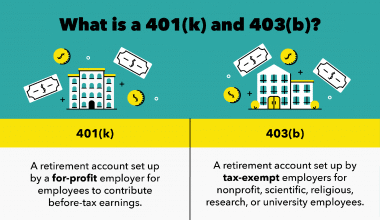When you pay off your loan, the mortgage company issues a deed of reconveyance, which releases your deed of trust. If you want to sell your house, you’ll need a full reconveyance deed form as evidence that the loan has been paid off. A mortgage company, like any other firm, is vulnerable to going out of business. A mortgage term of 30 years or more raises the chances. Also, if your mortgage company has gone out of business, you will still have your deed of trust discharged.
What is a Reconveyance Deed?
When you pay off a mortgage, you can use the deed of reconveyance to transfer the title of a property from the trustee to the trustor. The creditor of debt for the purchase of the property is the trustor. A bank or a mortgage holder may be the trustee.
For those trying to take out a mortgage to buy a home, understanding a deed of reconveyance is crucial. The paperwork certifies that the creditor is now the rightful owner of the property and that the mortgage loan has been fully paid off.
Parties Involved in Reconveyance Deed
Generally, there are three parties involved in this deed. they are as follows;
#1. Trustor
The trustor is the person who received a loan and is paying back the loan in order to exercise full right over the property as the owner.
#2. Trustee
The trustee is a neutral third party who holds the title to the property until the loan is paid off.
#3. Beneficiary
The beneficiary in a reconveyance deed form is the one who loans the trustor money to buy the property.
Reconveyance Deed Recording
A deed of reconveyance must be registered in the county where the property is situated in the public records. When the deed of reconveyance is lost, it causes a title problem because there is no evidence that the loan or other encumbrances have been compensated.
So, it is more likely that you would think that the reconveyance is not registered. It can happen when someone makes a mistake during the transfer of funds or when preparing the beneficiary demand (the sum needed to pay off a loan in full).
Common Reconveyance Deed Registration Mistakes
In some jurisdictions, such as California, they use satisfaction of mortgage documents instead of a deed of reconveyance.
#1. Mistake by a Title Company
The title company that handles the title for the house and mortgage can also be the title insurance company in some cases. If this occurs, the title company is usually the party in which the lender and owner must place their trust to ensure that the title is properly transferred.
A title company searches for and verifies the validity and cleanliness of the title, ensuring that there are no other claims to the title. These firms will then typically issue a title insurance policy for the lender as they pay off the mortgage. They do so also for the owner until the mortgage is completely paid and the title has been transferred.
If there is a mistake in the title transfer process, it will complicate things later on if you intend to sell the house.
#2. Mistakes in Mortgage Subordination
Mortgage subordination occurs when there are several liens on a property. This results in different priority statuses for each lien. Loan subordination may occur as a result of an error. Also, the newer loan registration is a lower priority rather than a priority.
This occurs more often in short sales when the first lender, who is not in priority, is cut by a junior lien payout that is much less than that lender would ever want to consider. This can trigger a short sale to delay or interrupt the approval process. Since the second lender is now first in line, he or she will refuse to budge.
#3. Errors in Clerical Work
Minor errors in the document itself, such as misspelling the borrowers’ or lender’s names or wrongly entering the property’s legal definition, are among the most common reconveyance deed issues. Although this takes longer to resolve, it is possible to do so by recording a correction deed.
#4. Mortgage Refinancing
Today, the majority of reconveyances arise because the homeowner has chosen to refinance the current loan, thereby paying off the existing loan. This initiates a reconveyance, which you must send to the new lender. This adds another fork in the path of a home’s financial road. It can trigger problems when you pay off the mortgage in full.
Example of a Reconveyance Deed
As an example, suppose Sally wishes to buy a house and needs to obtain a $300,000 mortgage from the bank. So, the new property serves as collateral under the trust deed. Once Sally has paid off her mortgage in full, the trustee must file a “Request for Reconveyance.”
When all debt repayments have been made, Sally must ensure that the lender files a deed of reconveyance. It will show that the mortgage loan has been paid off in full. The reconveyance will show that she has complete title and possession of the house.
How to Get a Reconveyance Deed
Step #1
Please get in touch with the title company that was present at your closing. Within 21 days of the trustee’s receipt of documents and payment, one must carry out and register a deed of reconveyance. If this has not occurred, the title company may prepare and record an obligation release within 72 calendar days of the debt’s repayment. The release of the title company is the equivalent of a deed of reconveyance.
Step #2
Investigate who took over the business. When a mortgage company fails, a successor company often takes over the account. For more information on the organization and its successor, try contacting the state’s, Attorney General.
Step #3
The county recorder’s office will provide you with a copy of the deed of trust. The deed may be used to locate the trustee or its successor. So, if that company did not receive an application for a deed of reconveyance, it will be able to assist you in determining which company is now servicing the mortgage company’s accounts.
Step #4
Get a surety bond. A Lost Trust Deed or Lost Trust Note surety bond is required under California Civil Code 2941.7 if a re-conveyance was never registered and the beneficiary of record cannot be found. A surety bond in the sum of two times the original note’s value must be given. Bond companies assist in the retrieval of missing documents required to declare the mortgage satisfied. They usually calculate the service fees as a percentage of the loan amount.
Read Also; Best mortgage lenders: 2021 picks updated (+ detailed guide)
What is the distinction between a Deed of Reconveyance and Satisfaction Mortgage?
- A Deed of Reconveyance certifies that they have full payment of the debt in a Deed of Trust. Meanwhile, a Satisfaction of Mortgage certifies that a mortgage loan specified in a Mortgage Agreement has been fully paid.
- Both forms essentially mean that a debt has been fully paid off, albeit for different types of documents.
- The state determines whether a Deed of Trust or a Mortgage Agreement was used.
- Some states require a Deed of Trust, while others require a Mortgage Agreement, and still, others recognize both as legal documents.
Full Reconveyance deed
When a trust deed/mortgage is fully paid, you will report a Full Reconveyance from the trustee, which states publicly that the debt has been paid. The trustee completes and signs the Full Reconveyance Deed Form, which must be notarized.
Most office supplies or stationary stores sell the Full Reconveyance deed form. The trustee appointed in your Deed of Trust will usually have forms available and will grant the Full Reconveyance.
Substitution Trustee and Full Reconveyance Deed Forms
The Substitution of Trustee and Full Reconveyance forms make up two documents that are serially combined into a single form or sheet.
The Substitution of Trustee and Full Reconveyance form is signed under Deed of Trust by the current beneficiary and present Trustee, whose signatures are notarized.
Special Considerations
If a homeowner fails to make timely property tax payments, she will still face eviction by the municipal government. In states that recognize a non-judicial foreclosure procedure, this process may be started by written notice and without involving the judge, so these owners do not receive many warnings. A reconveyance deed has no impact or interaction with property taxes.
When a second mortgage or home equity line of credit (HELOC) is used as collateral for a loan, the lending entity usually receives a security interest in the home. In the case that the borrower defaults, these lenders will also exercise their right to foreclose. These loans will be unaffected by a deed of reconveyance similar to the first mortgage.
What if the Deed of Conveyance Is Not Filed or Filed Improperly?
A title issue arises if a deed of reconveyance is not recorded or is incorrectly recorded with the office keeping the records, such as the local county courthouse. The homeowner may have trouble selling the house since the deed of trust will continue to be a burden on the property.
Can a Homeowner Face Foreclosure With a Deed of Conveyance?
Even after receiving a deed of reconveyance, a homeowner still runs the possibility of facing local government foreclosure if they don’t pay their property taxes on time. In states that recognize a nonjudicial foreclosure process, this procedure can be started by written notice and without the involvement of the court. A homeowner who owes back taxes is not protected by a deed of reconveyance.
What Is the Difference Between Conveyance and Reconveyance?
Property ownership is transferred through conveyance from one entity to another. A deed is a conveyance document that lists the parties and the assets being transferred. A deed of reconveyance is required to give the borrower ownership of the property, which is currently held by the lender.
What Is the Difference Between Security Interest and Deed of Reconveyance?
If the borrower defaults on the loan, the lender has a security interest in the property while the mortgage is still in force and may foreclose, evict, and seize the property. The deed of reconveyance demonstrates that the lender no longer has a security interest in the property and that the homeowner is now free and clear to transfer the property’s title at any time without fear of being foreclosed upon by the lending institution.
Who Needs to Sign a Deed of Reconveyance?
The trustee of the property must sign the deed of reconveyance, and for the signature to be recognized, a notary public’s stamp must be attached.
Conclusion
When you’re at the end of your mortgage, there are a few things you can do to prevent reconveyance issues. When buying a house, make sure to ask about current liens and that the title company has done a thorough audit of the title.
You may also conduct your own title quest by going to your county’s register of deeds or records office. If necessary, conduct a title check to determine the property’s chain of title from you all the way back to the original owner.
When you receive your deed of reconveyance, carefully check it for errors. If you find some, contact your county recorder to find out how to fix the issue.
Reconveyance Deed FAQs
Is a deed of reconveyance the same as a deed of trust?
A deed of trust is a loan document that involves three parties. … Finally, a deed of reconveyance is a document that shows that a loan made by a deed of trust has been paid in full. When the bank issues a deed of reconveyance it is important to remember that the actual title on the property does not change.
What do I do with a full reconveyance?
Most importantly, a deed of full reconveyance, known as a satisfaction of mortgage in some states, transfers title back to the borrower. Once the document is registered, it establishes the borrower as the sole owner of the property, which is now free and clear of the previous mortgage
What is a request for full reconveyance?
When a deed of trust/mortgage is paid in full, you can record a Full Reconveyance from the trustee stating publicly that the loan has been paid. The Full Reconveyance Form. is completed and signed by the trustee, whose signature must be notarized.
- LIVING TRUST: Overview, Cost, Templates, Pros & Cons (+Writing Guide)
- Mortgage: Simple 2021 Guide for Beginners and all you need Updated!!!
- Best mortgage lenders: 2021 picks updated (+ detailed guide)
- Declaration of Trust: Best US Practices & Definitive Guide
- FINANCIAL ADVISOR: Description, Jobs, Companies, Career, (+ Easy guide to becoming an Advisor)







